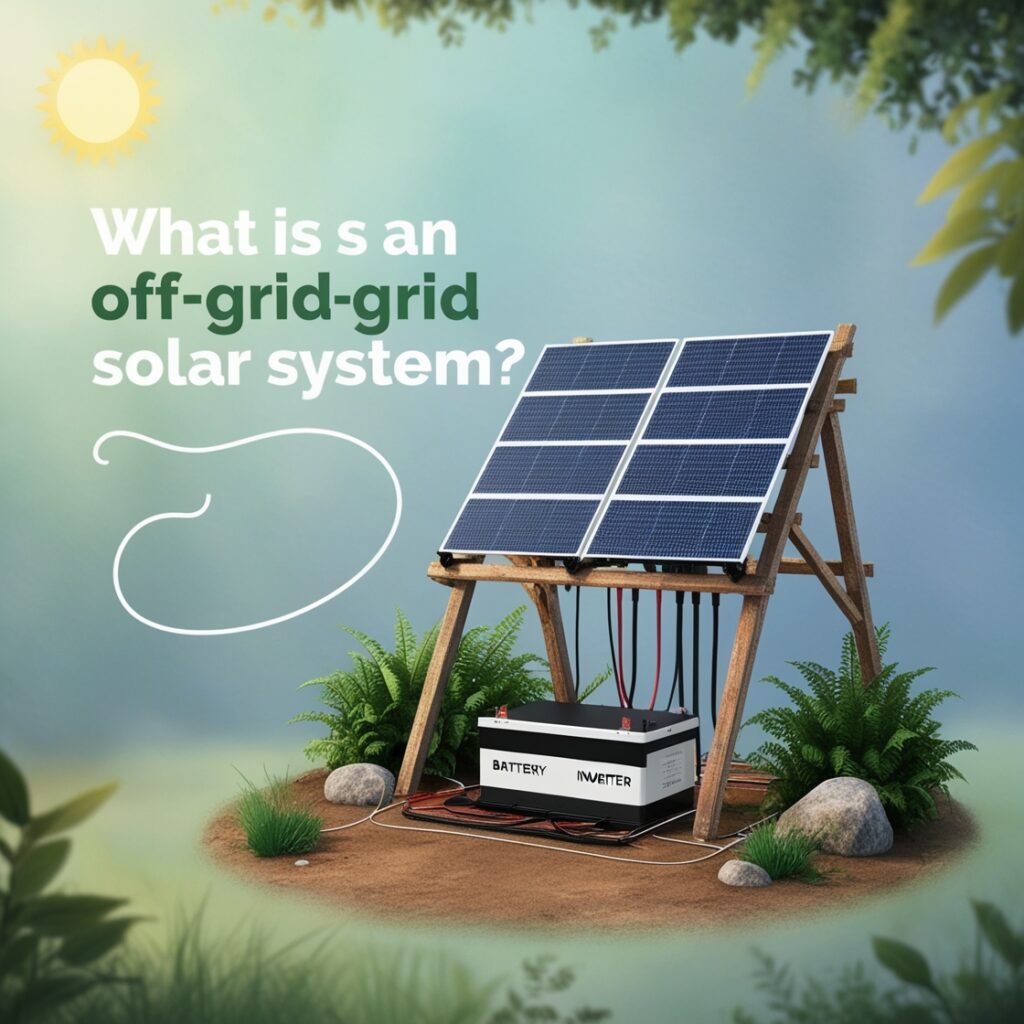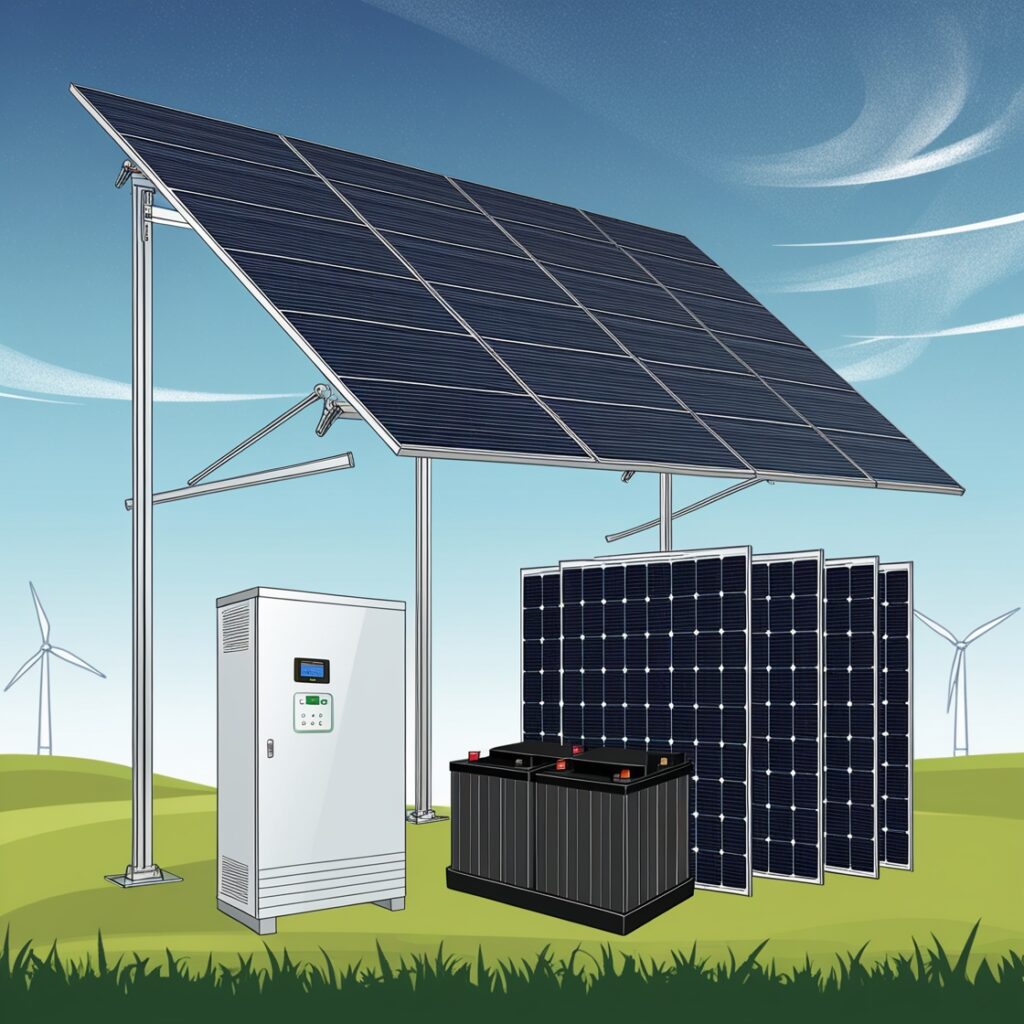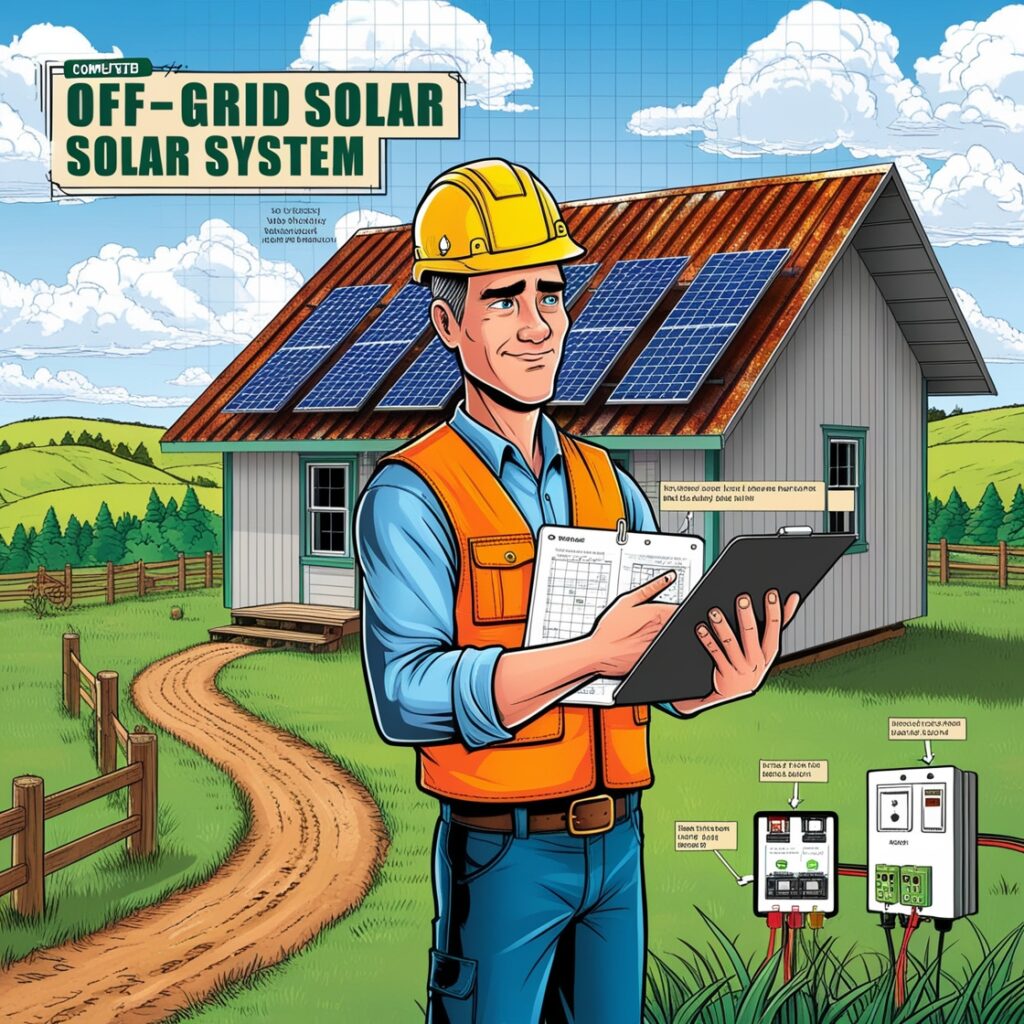Off-Grid Solar System: A Complete Step-by-Step Guide
With rising electricity costs and an increasing need for sustainable energy, off-grid solar systems have become a popular choice for homeowners and businesses. In this blog post, we’ll guide you through everything you need to know about installing an off-grid solar system step by step.
What is an Off-Grid Solar System?

An off-grid solar system is a standalone power solution that generates electricity using solar panels and stores it in batteries for later use. Unlike grid-tied systems, it operates independently, making it ideal for remote locations or areas with unreliable electricity supply.
Key Components of an Off-Grid Solar System
Before we jump into the installation process, let’s go over the essential components of an off-grid solar system:
Solar Panels – Convert sunlight into electricity.
Charge Controller – Regulates the voltage and prevents overcharging of batteries.
Battery Bank – Stores excess power for use when sunlight is unavailable.
Inverter – Converts DC power from batteries into AC power for home appliances.
Wiring & Protection Devices – Ensures safe and efficient electricity distribution.

Step-by-Step Guide to Installing an Off-Grid Solar System

Step 1: Calculate Your Power Needs
Before buying any equipment, determine your daily energy consumption.
List all electrical appliances you plan to use.
Note their power ratings (in watts) and estimated hours of use.
Calculate the total watt-hours per day needed.
Step 2: Choose the Right Solar Panels
Solar panels come in different types:
Monocrystalline (high efficiency, long lifespan)
Polycrystalline (cheaper but slightly less efficient)
Thin-film (flexible but lower efficiency)
Formula to estimate required solar panel capacity:
Total Solar Panel Capacity=Daily Energy Consumption (Wh)Average Sunlight Hours\text{Total Solar Panel Capacity} = \frac{\text{Daily Energy Consumption (Wh)}}{\text{Average Sunlight Hours}}Total Solar Panel Capacity=Average Sunlight HoursDaily Energy Consumption (Wh)
Example: If you consume 5,000 Wh/day and receive 5 hours of sunlight, you need 1,000W (1kW) of solar panels.
Step 3: Select the Battery Storage
Batteries store energy for nighttime or cloudy days. Options include:
Lithium-ion Batteries (high efficiency, longer lifespan)
Lead-Acid Batteries (cheaper but bulkier and shorter lifespan)
Battery capacity formula:
Battery Storage=Daily Energy Consumption (Wh)×Days of BackupBattery Voltage\text{Battery Storage} = \frac{\text{Daily Energy Consumption (Wh)} \times \text{Days of Backup}}{\text{Battery Voltage}}Battery Storage=Battery VoltageDaily Energy Consumption (Wh)×Days of Backup
Example: For 2 days of backup, 5,000Wh/day, and a 48V battery system:
5,000×248=208Ah\frac{5,000 \times 2}{48} = 208Ah485,000×2=208Ah
Step 4: Install the Charge Controller
A charge controller manages power flow to prevent battery overcharging. Choose between:
PWM Controllers (cheaper but less efficient)
MPPT Controllers (more expensive but maximizes efficiency)
Step 5: Select and Install the Inverter
The inverter converts DC (battery power) to AC (home appliances). Choose an inverter with a capacity 20-30% higher than your total wattage requirement.
Example: If your peak load is 2,000W, go for a 2,500W inverter.
Step 6: Wire the System Properly
Proper wiring is crucial for safety. Use high-quality cables, fuses, and circuit breakers to protect your system. Connect components as follows:
Solar panels → Charge controller
Charge controller → Battery bank
Battery bank → Inverter
Inverter → Home appliances
Step 7: Mount the Solar Panels
Install solar panels on a south-facing roof (in the Northern Hemisphere) at an optimal tilt angle.
Ensure panels are secured with a sturdy mounting structure to withstand harsh weather.
Step 8: Test and Maintain the System
Once installed, test your system to ensure it’s functioning correctly.
Check voltage and current readings.
Monitor battery charge levels regularly.
Clean solar panels monthly to maintain efficiency.
✔ Energy Independence – No reliance on the power grid.
✔ Cost Savings – No electricity bills.
✔ Eco-Friendly – Reduces carbon footprint.
✔ Reliable in Remote Areas – Ideal for villages, farms, and remote homes.

Conclusion

An off-grid solar system is an excellent investment for anyone looking to gain energy
independence. By following this step-by-step guide, you can install a reliable and sustainable solar power system for your home or business.
Need help setting up an off-grid solar system? Contact us today!

